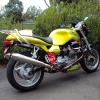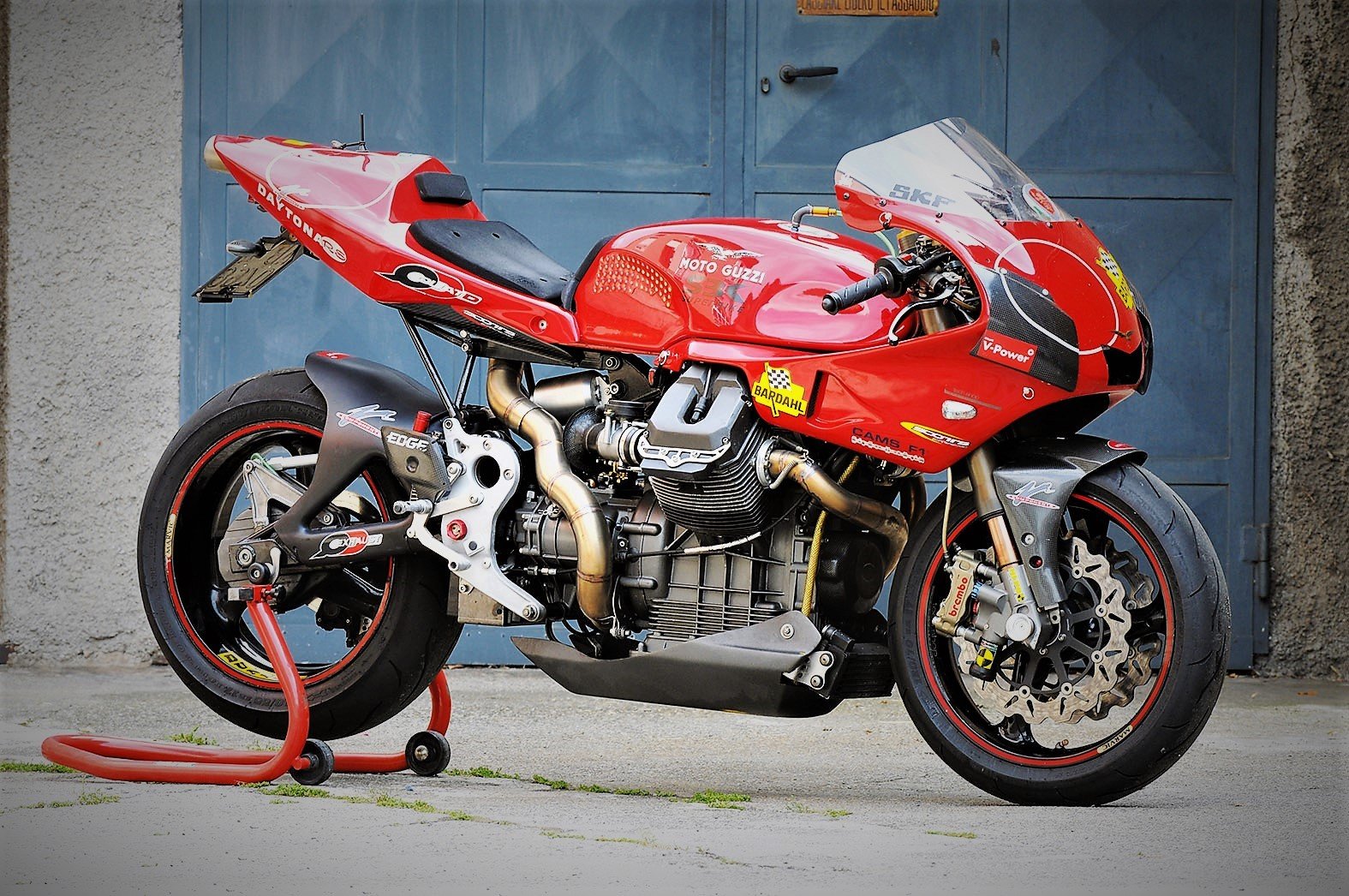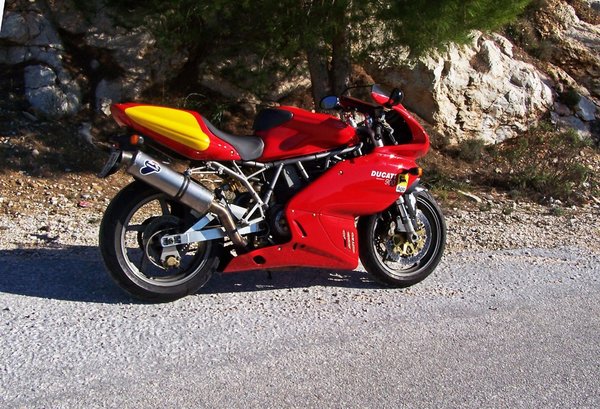-
Posts
5,234 -
Joined
-
Last visited
-
Days Won
268
Content Type
Profiles
Forums
Events
Gallery
Community Map
Everything posted by Lucky Phil
-
No idea, Guzziology doesn't mention year models. They probably only built the T5 for a few years. Is your bike possibly one of the effected wrong speedo bikes? because if it is Guzziology says once you change it to the correct speedo ration it doesn't feel overgeared at all. Ciao
-
I'm not that familiar with the EV model just what I can see in internet images,but Guzziology recommends to use a T5 7/33 ring and pinion set for 5 speed 1100's with the 8/33 ratio. It also says that that early California 1100's had the wrong speedo gearing fitted from the factory and they overed so the bike wasn't going near as fast as riders thought when they were waiting to shift into 5th. Ciao
-
Your'e exactly right, its the working stuff out that takes the time plus I'm slow at that. I can come up with solutions but i'm not fast at it. I have a good mate that arrives at the same solutions as me usually but he figures out in 5 min what it takes me a week to work out. He has a really strong ability to visualise things and it's a fantastic gift. Interestingly after he had a course of chemotherapy he lost the ability but after a year or two he gradually regained it. I often need to see stuff in the flesh and then modify and refine it. Ciao
-
No those stats are always without the rider. Too many variations in riders. If you are too far outside the box these days with regard to your physique then you can pretty much forget getting a proper cutting edge sports bike to handle to its full potential. The bike and suspension and the tires are all designed these days for a rider between 5'4" and 5'8" 125 to 145 lbs. As you move outside that box your ability to be competitive diminishes exponentially. You may think that that's only for road racers but if your 6'2" and 190 lbs nothing on a a modern hyper sports bike is designed for that kind of creature. Not suspension, ergonomics or tires. Doesnt mean its unridable on the road but your on a hiding to nothing getting it set up to be really good. Modern sports bikes are designed around modern racers,ie Jockey sized people. Ciao
-
So I managed to make a mount for the regulator from 4 mm aluminium plate just need to pretty it up a little. I also found a new place for the stupid horn. I totally dont need a horn fitted to a bike but its a legal requirement here so its fitted. Getting rid of the 2nd one though. There's plenty of space under the tank now but real estate between the V is tight. I had to re think the swapping of the reg and feed tap as there's no real room on the rhs of the frame to mount the pump as the main wiring loom runs there. The only issue is the reg body is close to the TPS connector but it should be ok. The benefit is it simplifies the fuel hose routing. The fuel will come from the pump on the rhs to the filter then over to the throttle body on the lhs then cross over to the rhs tb then from there to the reg and back into the tank. Found out I need a Centy throttle cable as well. Ciao
-
This looks very nice. I have one of these single seat units in red brand new ( the original dual seat is still used)and a CF front cowl unpainted new as well plus a spare tank and second hand fairings in various colours. The plan was to have a spare set of bodywork in red as that was my favourite colour for them when I bought it in 2012 but as time has passes I actually like my yellow better. Too may red ones around I guess. Ciao
-
From the album: V10 Engine
-

Rear brake Caliper carrier bolt rounded out
Lucky Phil replied to LangleyMalc's topic in Technical Topics
Sorry about that mine doesn't have the pin so I ignored that bit:) Ciao -

Rear brake Caliper carrier bolt rounded out
Lucky Phil replied to LangleyMalc's topic in Technical Topics
Carefully drill the head off the cap screw,loosen and remove the other caliper mount bolt. Remove the rear wheel, pull the caliper off and use multi grips to extract the bolt with the head drilled off. Apply some heat and or penetrating oil if necessary. Ciao -
Young and smart I'd say, 860 GT's weren't very impressive even in their day. Ciao
-
Nice, I went straight to the aviation section and looked up PW 1830 and Wright R-3350 gaskets. R-3350, now there's and engine for you. Ciao
-
Agreed on everything here. My 1000 used to live in my lounge room. I never tired of looking at it,it was just the most beautifully designed and executed motorcycle I've ever seen. Fairings off was even better. Every part was perfectly designed and a thing of beauty no exceptions. I only sold my last one because I missed riding a twin. No matter how beautiful the MV was I couldn't deny the pleasure of a big high output twin, hence the purchase of the 1198. The 1198 isnt half the looker of the MV but it has the feel and sound over it. You cant have it all. One of my most vivid memories was as a mechanic at the WSB round years ago at Phillip Island working for a friend running a 996 Corse. Starting that thing was a sensory overload. I'd be at the back with our starter, a Honda stationary engine with a go cart wheel and tire mounted on the crank fitted to a wheeled frame with handles and a twist grip throttle. The 996 was on its stand and my mate stood next the the bike chest on the tank and holding the bars. My job was to hold the Honda engine flat out with the go cart tire hard against the back wheel of the 996 spinning the wheel up to god knows what speed but fast. You could hear the wizz of the chain over the Protesting little Honda engine. My mate would be looking at me and I'd give him the nod when I thought we were at maximum wheel speed and he'd pop the clutch on that big angry racing twin and it would start instantly. Both Termi outlets pointing straight at my chest 1/2 meter away. The sound was overwhelming as was the experience. We'd then hand it over to our rider and he would take that frightening, brutal thing out and do battle with it. There's not many things in this world as visceral and emotive as a big racing twin at full noise. An inline 4 doesn't even come close. Not even the beautiful and magnificent MV. Ciao
-
Or a scale at one end and a levelling block at the other end and then repeat the other way around and add together. Ciao
-
I wouldnt use the old style gaskets anymore either. Pete Roper sent me a couple of the metal type and they dont leak, dont tear and dont compress over time. Technology moves forward. Ciao
-
8-12 nm Ciao
-
Update, I've been fabricating the front tank mount which has been a challenge conceptually and in a manufacturing sense mainly because I dont have Chucks skills or equipment. A mill would have been handy and if I was making dozens of them water cutting would have been an option but as it stood it was all old fashion hand work from 4mm steel plate. The objectives were to raise the tank around 40 mm and have the fwd mount be adjustable in the horizontal and the vertical, use the original tank mounts unmolested if possible and control any tendency for the new mount to rock back and forth. The mount here in the images still needs the brass spacers replaced with Titanium ones which I'll machine up from stock which I have. These are just bushes I had around that fit the purpose for mocking up. The vertical plates holding the tank rubbers are tapped to accept 6mm bolts and I'll use some ti nuts as lock nuts, just belt and braces. Originally I was going to use internally threaded Ti rods between the side plates to not only anchor the them together but also to rest on the frame top surface front and rear to prevent the mounts rocking. I have instead tapped the vertical plates the front and rear feet of which contact the top face of the frame to prevent rocking. I'll bond some SS shims onto the frame to prevent chafing. The vertical plates will be joined by some 18mm hex alloy bar necked down (so I can get a spanner on it) in the middle and tapped internally both ends to eliminate the mount rubber nuts seen here and connect the two sides together. So I have around 20 mm for and aft adjustment and 15 mm vertical. I also need to make up the spacers between the mount rubbers and the vertical pieces. All the spacers and fasteners will be Ti with the 4 horizontal side plate ones hex head bolts. I will then Blue the steel stuff. I'd rather passive cad plate them but that's always problematical these finding platers that will do small stuff. The tank outlet and return with the reg will change sides as will the fuel pump to give better clearance to the throttle bodies and the TPS. I have fitted the fuel filter and I need to make an alloy bracket to mount the regulator laying flat on top of the frame backbone in front of the fuel filter using the old fuel filter mounts. Final tank position reg clearance Fuel tap clearance Tank Mount Fuel filter in the background now sharing the the airbox bracket mount. I'll still run the airbox lid but most of the snorkels will go to make room for the fuel filter. The Alt Reg will mount flat in front of the filter using the old filter mount. Not my first choice for a location due to the engine heat but my 1198 unit is in a lot worse location right behind the oil cooler. Ciao





